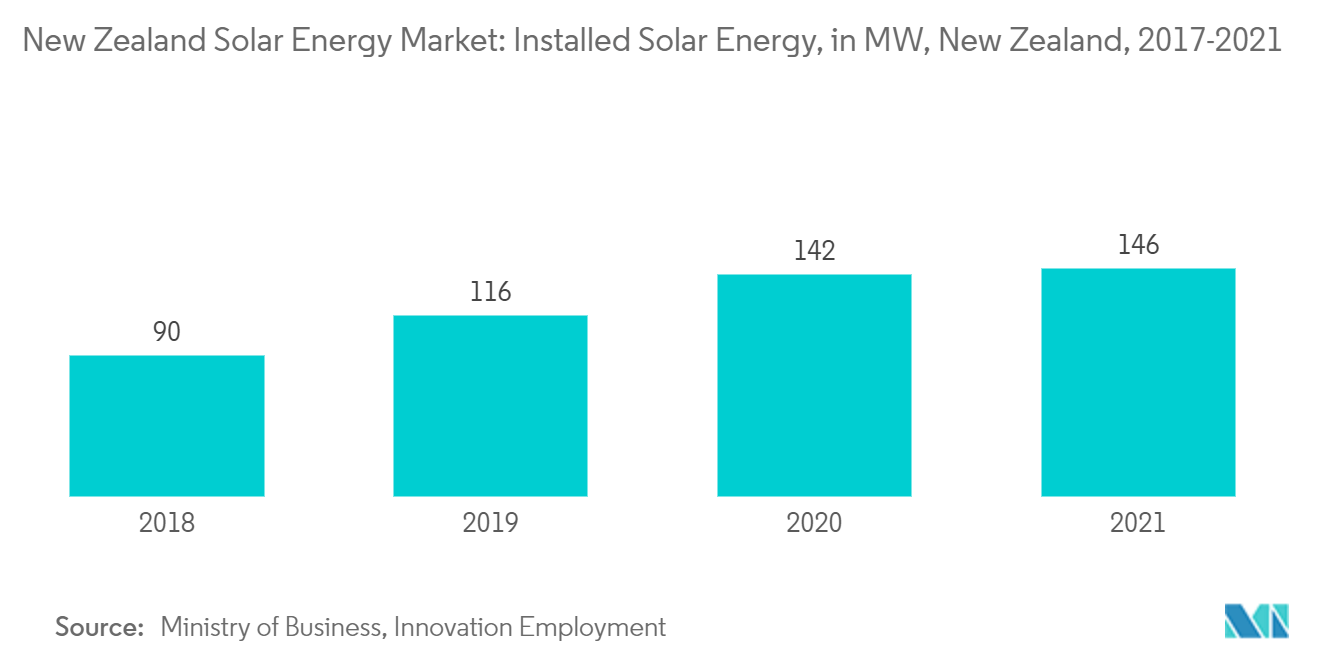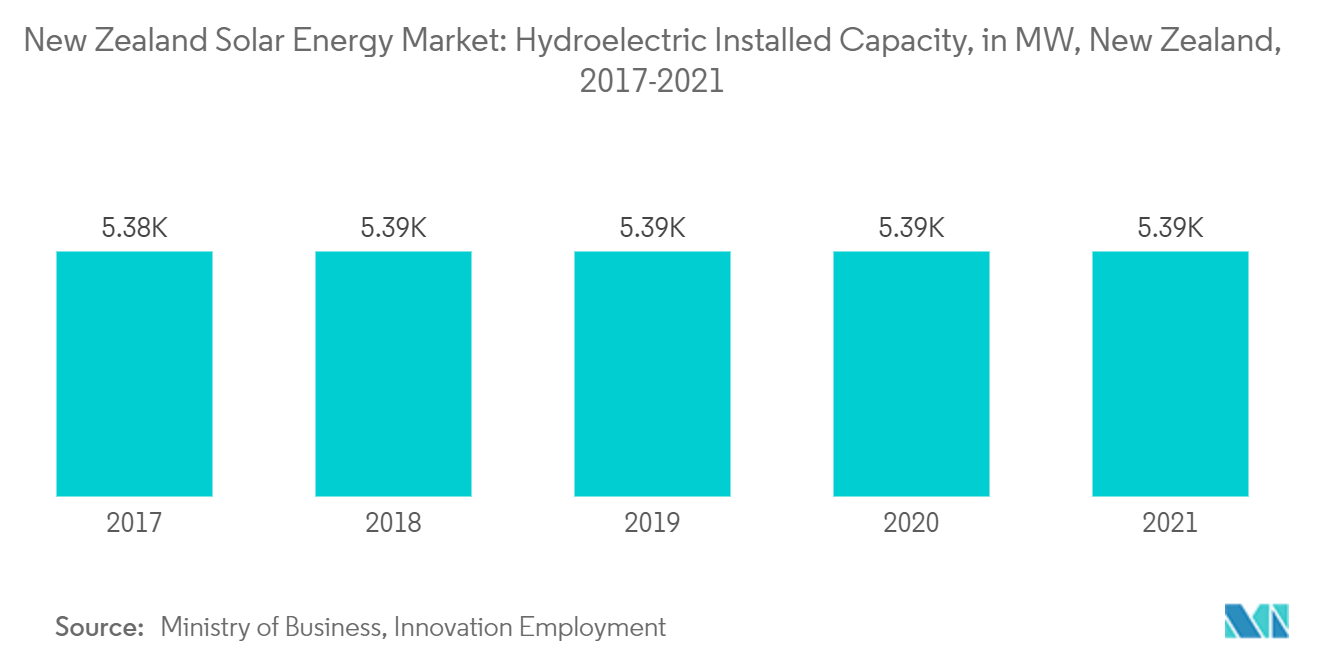Market Trends of New Zealand Solar Energy Industry
Utility Sector to Witness a Significant Growth
- The New Zealand solar energy market is expected to have the utility sector as its dominant segment due to the declining cost of solar generation technology and numerous upcoming solar power projects during the forecast period.
- In New Zealand, the utility segment of the solar energy market has grown a lot in the last few years. In 2021, the installed solar capacity reached about 146 MW, recording an increase of 20% compared to the 146 MW in 2020. Most of this solar generation is from utility-scale solar power plants.
- The government has set an ambitious target of increasing the share of renewable energy from 80% to 90% in 2025 and to 95% in 2035. Such targets are likely to see significant investments in the country's solar energy industry in the coming years.
- There are already plans for or construction of a number of large-scale solar projects in the country. For instance, in January 2023, Saft, a subsidiary of TotalEnergies, got a contract to establish New Zealand's first big grid-connected battery, which is worth $NZ186 million.
- So, based on the above factors, the utility sector is likely to see a lot of growth in the solar energy market of the country during the forecast period.

Rising Adoption of Alternative Clean Energy Sources to Restraint the Market
- The increasing adoption of alternative clean energy sources such as wind, geothermal, and hydropower. The prime reason behind it is the higher potential of wind energy, cheaper electricity generation from geothermal, and mature hydroelectric business in the country.
- As of 2021, New Zealand could get more than 15 GW of power from wind energy.The hydroelectric sector in New Zealand was established before 1980. Hence, such a scenario made solar a minor renewable sector in the New Zealand electricity generation market.
- Even though the cost of installing solar systems and the importance of solar energy to the government are likely to help the growth of solar energy in the country, upcoming wind energy projects are likely to make solar energy a smaller part of the country's electricity mix in the future.
- As of 2021, New Zealand had around 5389 MW of hydro, 984 MW of geothermal, and 917 MW of wind. With upcoming projects like Castle Hill Wind Farm, Kaiwera Downs Wind Farm, and Mahinerangi Wind Farm-Phase 2-the country is expected to increase its electricity generation capacity from wind during the upcoming years.
- The government of New Zealand said it would spend USD 30 million to look into a possible USD 4 billion hydro scheme in Central Otago. This would reduce the country's reliance on coal and gas-fired power plants.
- Due to the aforementioned, it is likely that the growing use of other clean energy sources will slow the growth of the New Zealand solar energy market during the forecast period.


